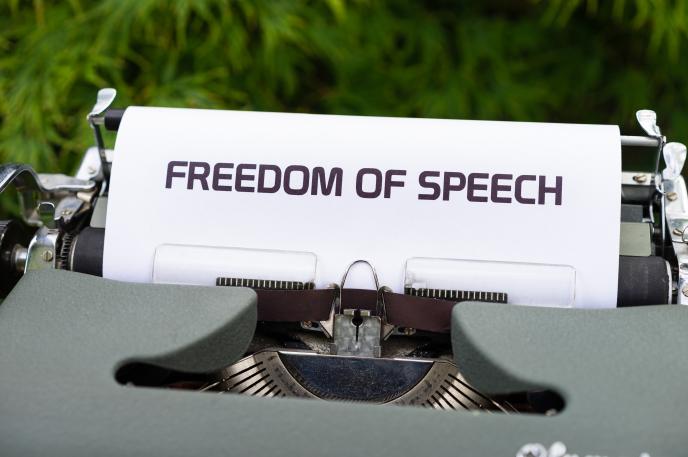
Censorship and Black Lives Matter
July 12, 2021
This blog was written as part of Charlotte Mecklenburg Library's Black Lives Matter program initiative. Learn more about the program and corresponding events here.
During the 20th and 21st centuries, widespread mass protests have become an essential element of displaying civic engagement in America. Topics such as LGBTQ+ rights, animal cruelty and gun control have elicited millions of people to protest. However, on May 25, 2020, the murder of George Floyd at the hands of police officer Derek Chauvin led to the largest protest in the history of the United States. Over 20 million people nationwide gathered to protest police brutality and racial injustice against Black Americans. While many protests related to other subjects have taken place without many limitations, the Black Lives Matter (BLM) movement has been subject to extreme censorship by both police and the media.
Even though most BLM protests were peaceful, calls for militarized police were requested on a national level and states went under lockdown in response. Consequently, the usage of pepper spray, tear gas and rubber ammunition further instigated violence. According to the Texas Tribune, during days of protests, police officers used pepper spray and arrested protestors, critically injuring one person and sending others to the hospital. An additional person had been trampled by an officer on horseback. These actions directly contradict the right to peaceful protest indicated by the First Amendment. Under this law, police forces are only allowed to contain individuals if they have witnessed them commit a crime, possess a warrant, or have probable cause. The intense scrutiny under the BLM movement has made it difficult for people to protest peacefully and the police officers that have been deployed on a national level has left protestors unable to use their voices for change.
Nevertheless, censorship comes in more forms than just government control. Last year, Ardrey Kell High School painted the rock in front of the school with symbols of the BLM movement, honoring the victims of police brutality and encouraging students to act. Yet just a week following this gesture, the rock was vandalized and replaced with hate speech. The BLM movement has constantly faced bigotry and the fact that people were so quick to stop others from speaking out illustrates the massive amount of censorship behind Black and POC voices.
This is not the first time the movement has been censored in a school environment. On May 13, 2021, an entire year after George Floyd's death, an Oklahoma School District banned students from wearing a BLM shirt, stating that “politics will not be allowed at school.” According to the National Coalition Against Censorship, students were required to turn their BLM shirt inside out and were prohibited from entering class until they changed their clothes. The school prohibited students from expressing political beliefs, violating the law established in Tinker v. Des Moines which stated that “students’ political speech is protected by the First Amendment”. At another high school in Florida, a yearbook was censored for containing views about BLM and was cited as being “too politically one-sided.” However, this comment seems as though it was only used to silence the editors, as what was posted in the yearbook only detailed the history of the movement and why it was started.
Fortunately, people have been standing up to fight against the censorship and have strengthened the movement in the process. When the rock at Ardrey Kell was vandalized, students organized a repainting session, inviting the entire school to collaborate on making an artistic representation of the BLM movement. Students who oversaw writing the yearbook at the Florida high school distributed a letter maintaining the political integrity of their article and reaching a middle ground to get their book published. In a broader aspect, journalists and protestors have been able to shed light on their experiences protesting and social media apps have been essential for revealing the truth as it is. As the protests continue and people begin to pay more attention to the movement, it is essential to fight back against censorship and show the world what the BLM movement truly represents — fighting racism, police brutality and serving justice to its victims.
--
This blog was written by Medha Kowndinya, she is 16-year-old rising high school Junior.
